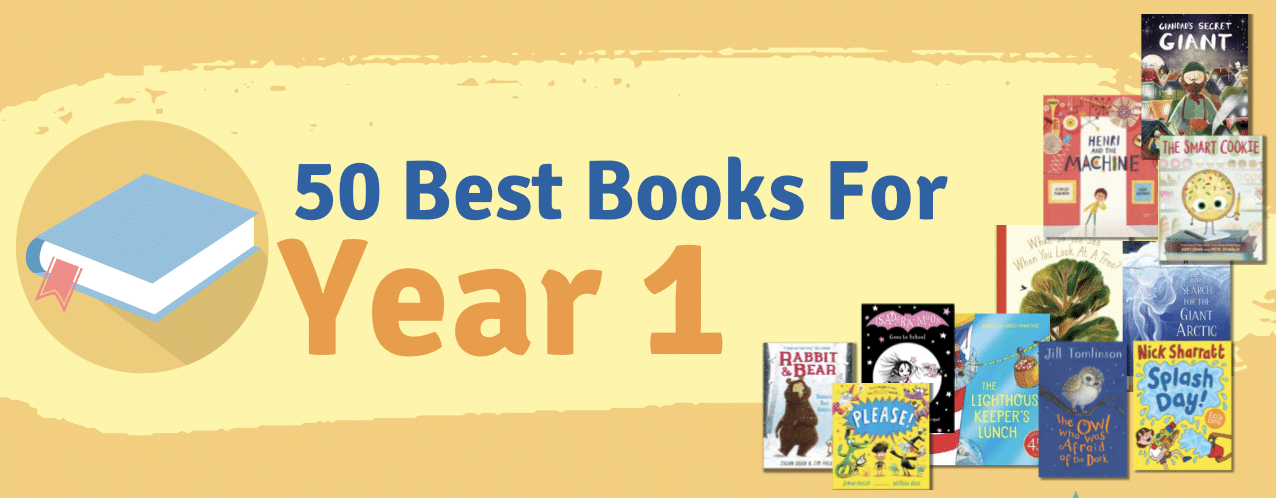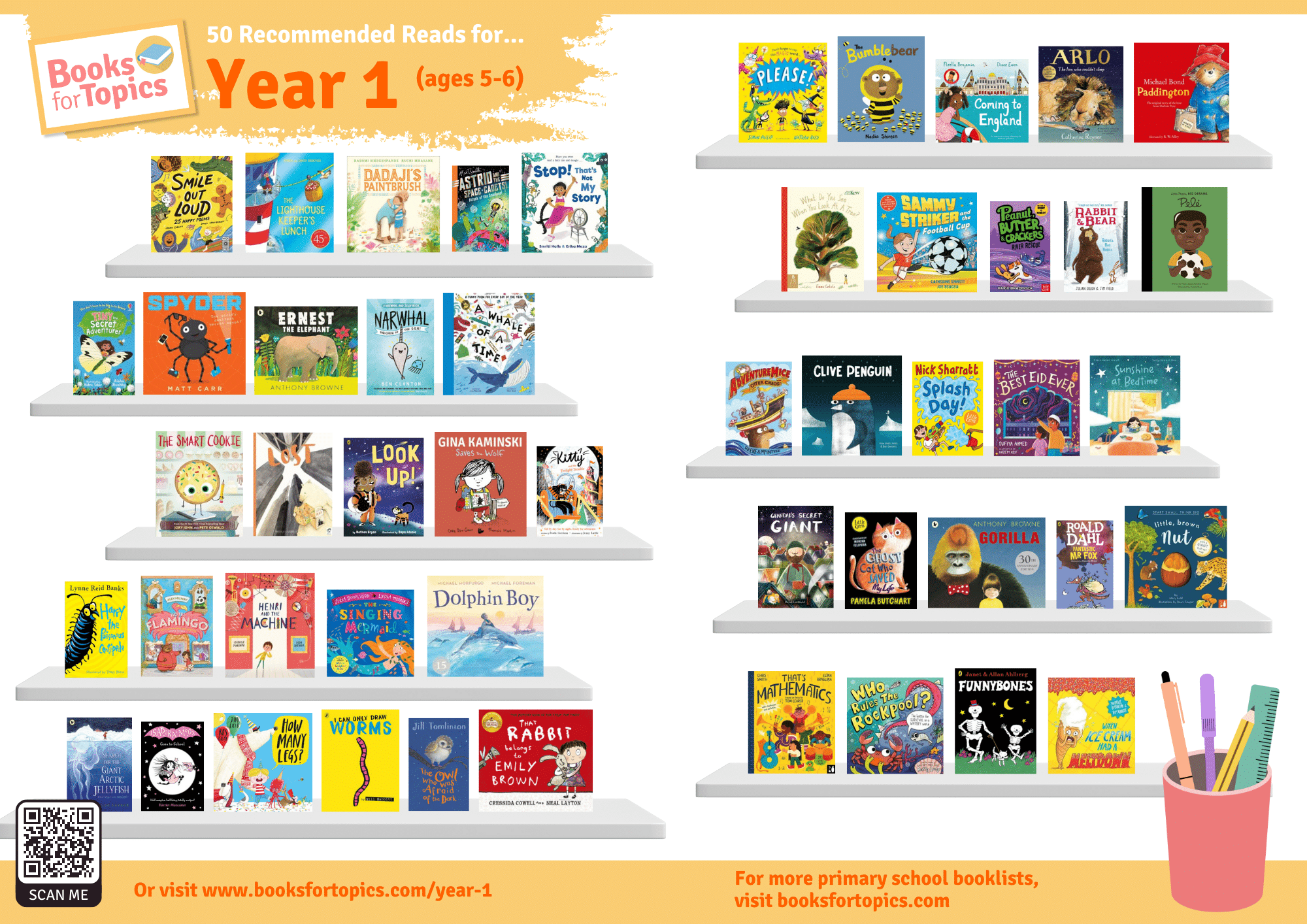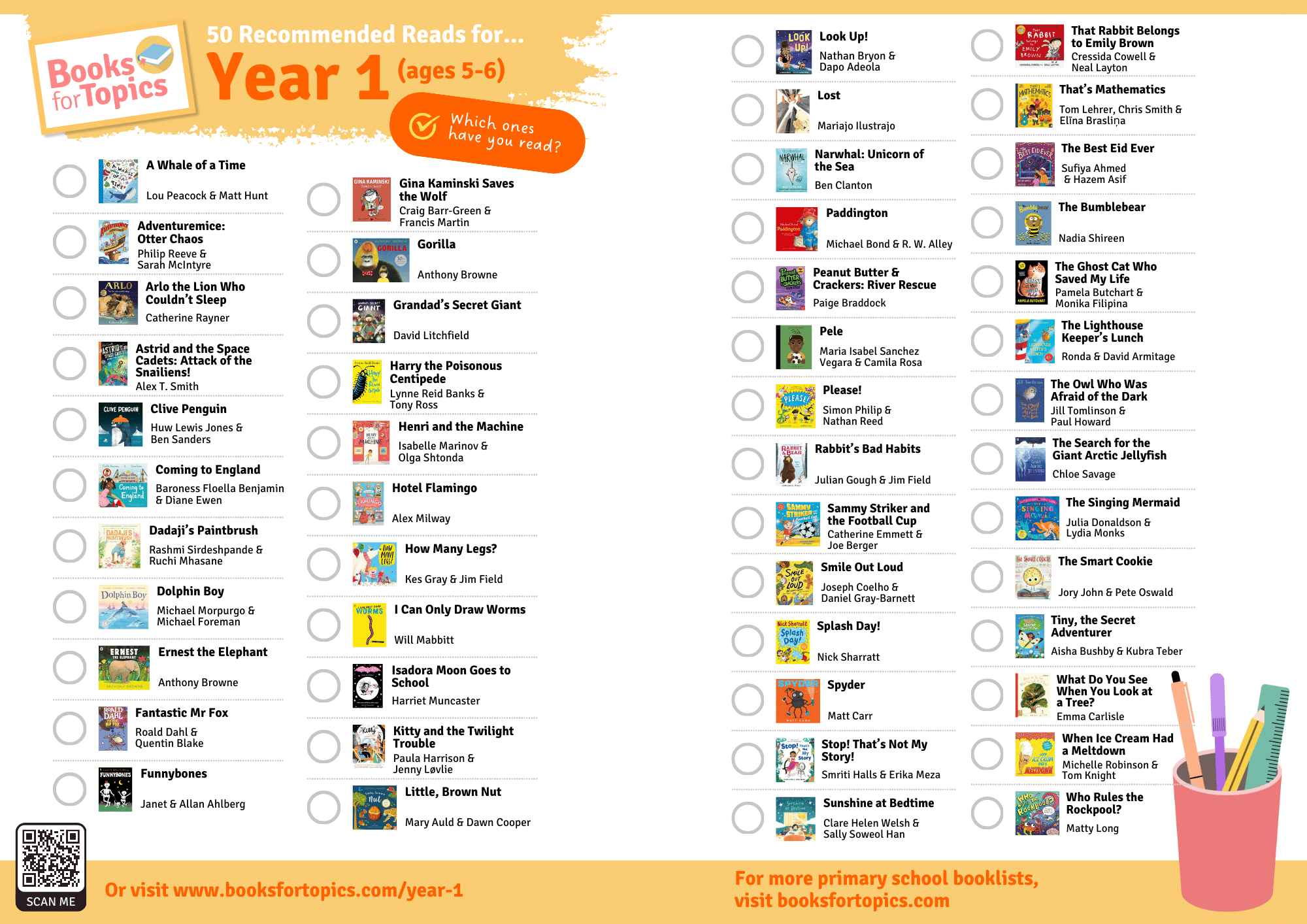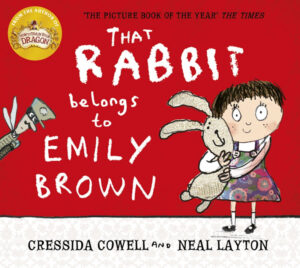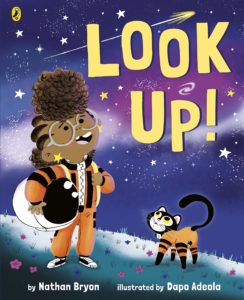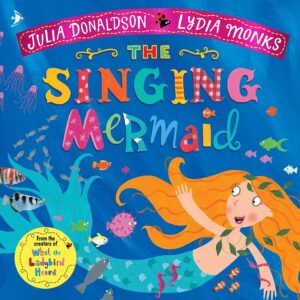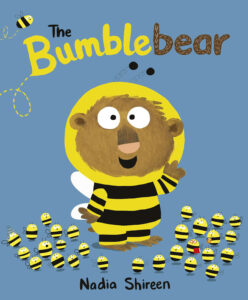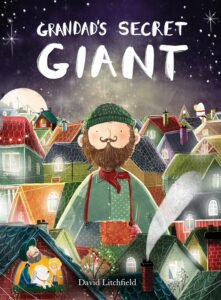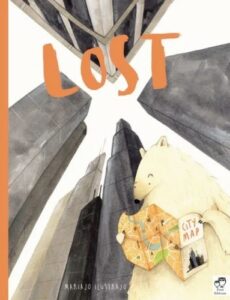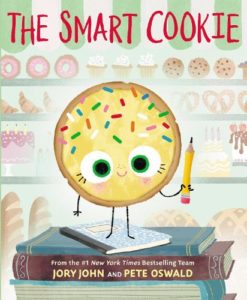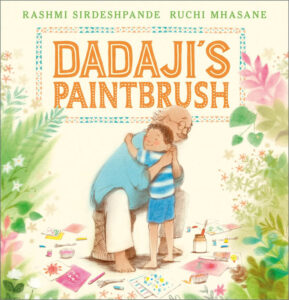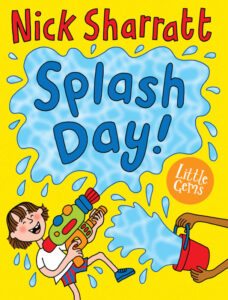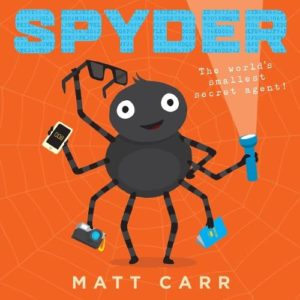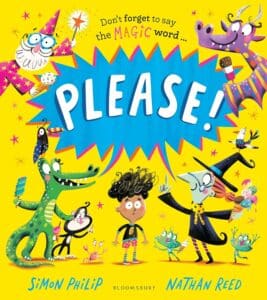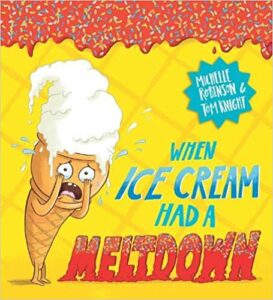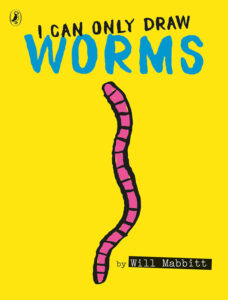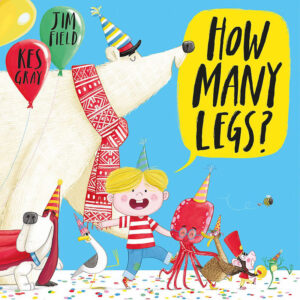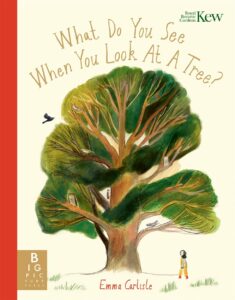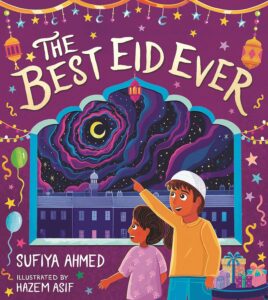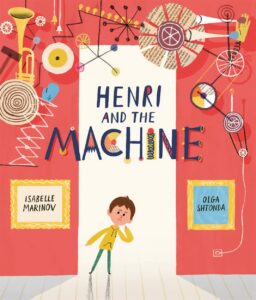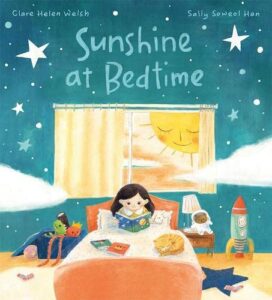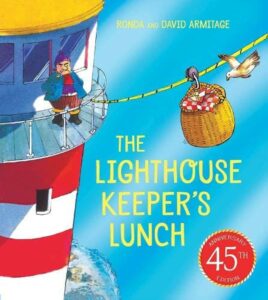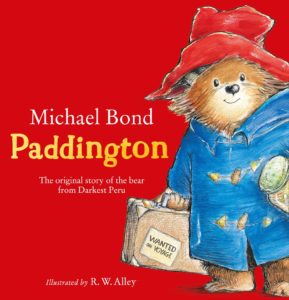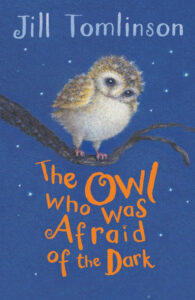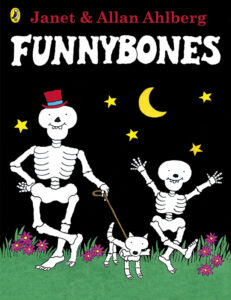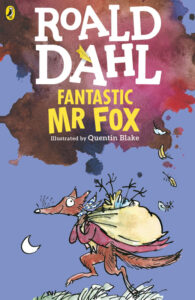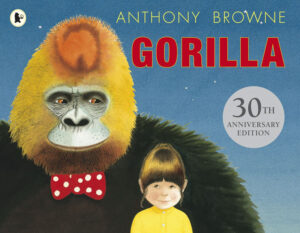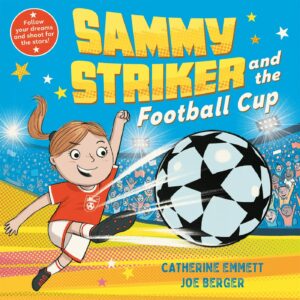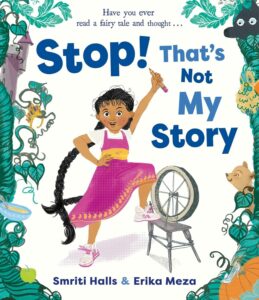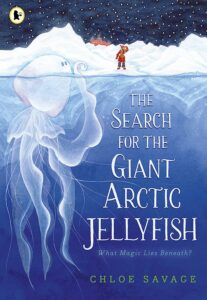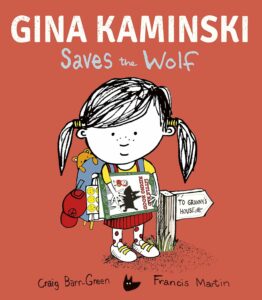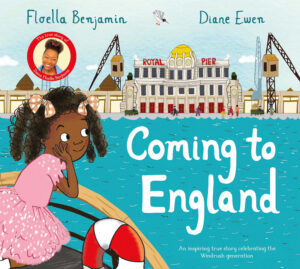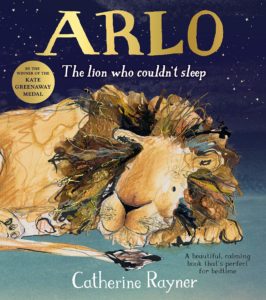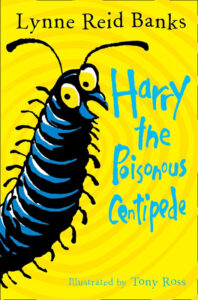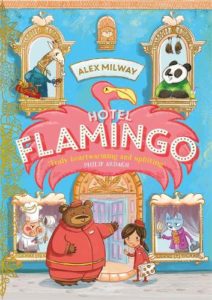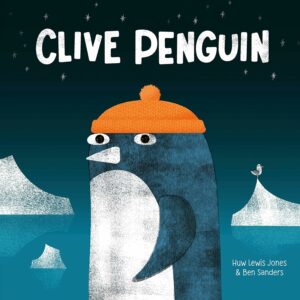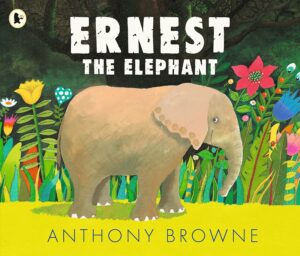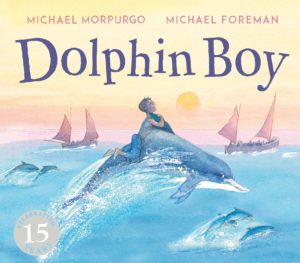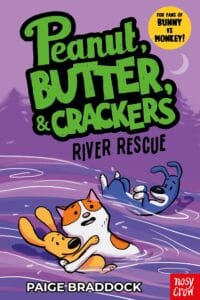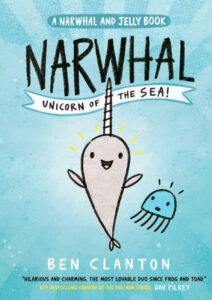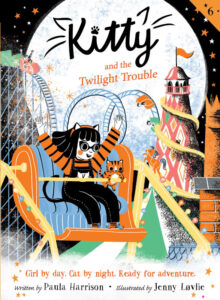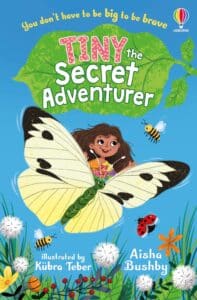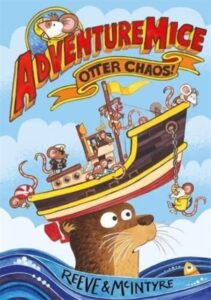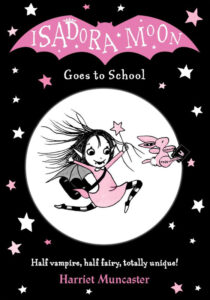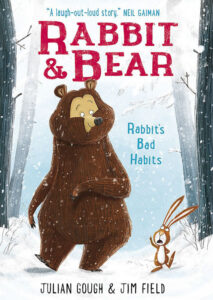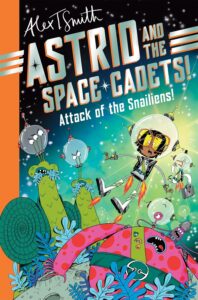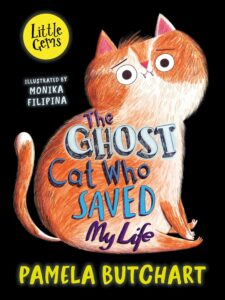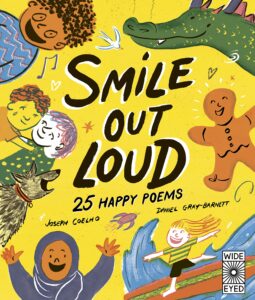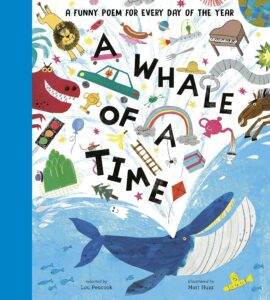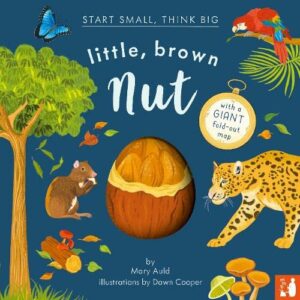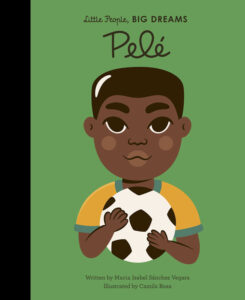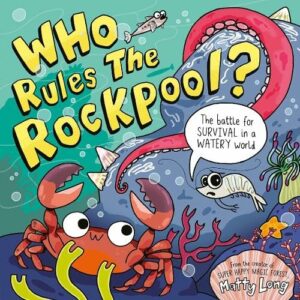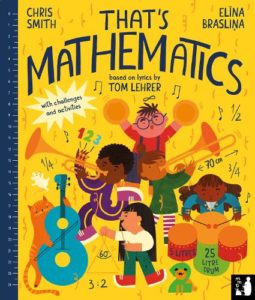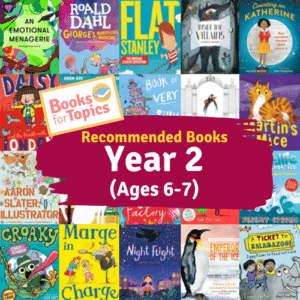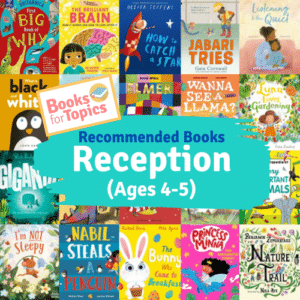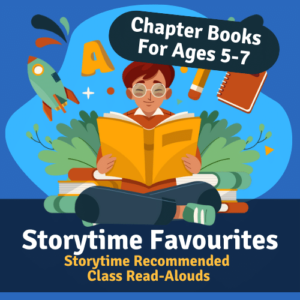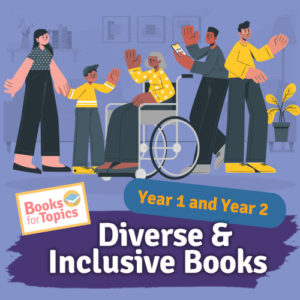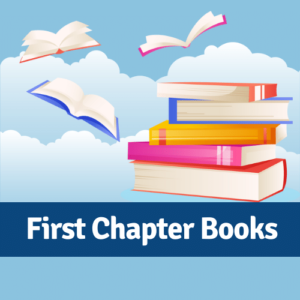What kind of books should children in Year 1 be reading?
Year 1 is a delightful year group to share books with, and at the moment there is a brilliant range of engaging books available for this age. Often at the ages of 5 and 6, children are learning to read short texts independently, while still relying on strong visual elements. Look for books with extra visual details to spot in the illustrations, like David Litchfield’s much-loved story Grandad’s Secret Giant or Anthony Browne’s Gorilla, which is full of extra clues and insights to spot in the illustrations.
The books on this list are not intended to replace school reading schemes, which are designed specifically for the teaching of phonics and reading. Instead, the books on this list have been selected with reading for pleasure in mind, whether with an adult or independently.
Make sure you have to hand a plentiful supply of Y1 picturebooks that are great for reading aloud, like That Rabbit Belongs to Emily Brown (which lends itself so well to ‘doing the voices’) and Michelle Robinson’s super-fun story When Ice Cream Had a Meltdown. Some books, like Splash Day and Isadora Moon, make for brilliant first independent reads as confidence begins to blossom with reading through this stage.
Many Y1 children treasure storytimes when adults read aloud, and shared reading experiences remain an essential part of language and literacy development both in the classroom and at home. Don’t rush children into having to read the words independently too soon, but savour the joy of reading whole books together. Children at this age often love handling books, and they make a bee-line for texts that offer engaging illustrations, interactive elements or memorable characters. Share the absolute fun of I Can Only Draw Worms together, with its visual humour aplenty, or enjoy the unforgettable adventures of classic characters like Paddington.
Children in Year 1 are increasingly able to identify themes of interest and empathise with characters in familiar settings. Be sure to introduce Year 1 children to books that will make them think more deeply about the world around them, like Coming to England or Dadaji’s Paintbrush.
Many 5- and 6-year-olds begin to be able to sustain attention for longer stories that take place over several sittings, making short, illustrated chapter books an appealing option for storytime. Start with shorter chapter books for Year 1 like Rabbit and Bear, which is popular with children looking for warm humour, or classic storytime favourites like The Owl Who Was Afraid of the Dark.
Which books are best for 5 and 6 year olds?
For this reading list, we’ve carefully selected a balance of different types of books for reading for pleasure in Year 1. Some of the best stories for Year 1 feature larger-than-life characters that will cause a giggle, like the wide-eyed bear in The Bumblebear or the secretly lost polar bear in Mariajo Ilustrajo’s Lost. Animal characters are always popular at this age, with some given delightful personalities like the cast of the Hotel Flamingo books, while others explore the deep connection between children and animals, like Michael Morpurgo’s Dolphin Boy.
Many of the best stories at this age explore true-to-life experiences, like navigating life with siblings in Look Up!, visiting an art gallery in Henri and the Machine or losing a beloved grandparent in Dadaji’s Paintbrush. Others help to develop mindfulness, like the nature-themed What Do You See When You Look At a Tree? or Catherine Rayner’s Arlo the Lion Who Couldn’t Sleep, which explores nighttime anxiety and self-calming techniques.
Picked out for enjoyable storytimes with 5-6 year olds, some of the books on this Year 1 reading list lend themselves especially well to being read out loud. Rhyming books like The Singing Mermaid or Simon Philip’s Please! are great choices. Others offer a quick win for a super-fun storytime full of zany laughter, like short chapterbook Rabbit and Bear or the bold humour of I Can Only Draw Worms, which is always a big hit in the classroom. We’ve also included some classic stories for Year 1 on the list, such as Fantastic Mr Fox and the much-loved skeleton-themed FunnyBones.
Should children in Year 1 be reading chapter books?
In Year 1, some children are ready to read short chapter books. Others take a little longer to have the stamina required for chapter books and will not start reading longer books just yet, and this is perfectly normal within the 5-6 age range too.
Starting with adult-read chapter books at storytime is a great way to introduce chapter books to younger children. For storytime read-alouds or class novels, try Adventuremice, Harry the Poisonous Centipede or Fantastic Mr Fox.
Some more advanced readers in Year 1 will be keen to take on the challenge of reading early chapter books for themselves. To cater for your Year 1 readers of chapter books, look out for books with illustrated pages, a readable font and a relatively short page count. For newly independent readers looking for their first longer read, we recommend Isadora Moon, the Kitty series and Alex T Smith’s new short chapter book Astrid and the Space Cadets.
For more chapter book ideas, be sure to check out our separate booklists listing recommended KS1 Storytime Chapter Books or First Chapter Books for Independent Reading.
What are the best non-fiction books for Year 1?
You’ll also find on this list a range of age-appropriate non-fiction for Year 1, from the science-themed Little, Brown Nut, to the inspirational biography of football legend Pele and the comically illustrated exploration of coastal biology in Who Rules the Rockpool?.
If you are looking for books themed around a particular topic, head over to our KS1 topic booklists.
BooksForTopics is the best place for trusted recommended reading lists! Just like the Y1 booklist, we have lists for other year groups, too. Our team of experts at BooksForTopics has poured hours of careful work into curating lists of the best books for each primary year group. Each booklist contains 50 recommended reads and includes a printable poster and checklist. Schools can purchase full packs of each Year Group list from our partners at Peters.







